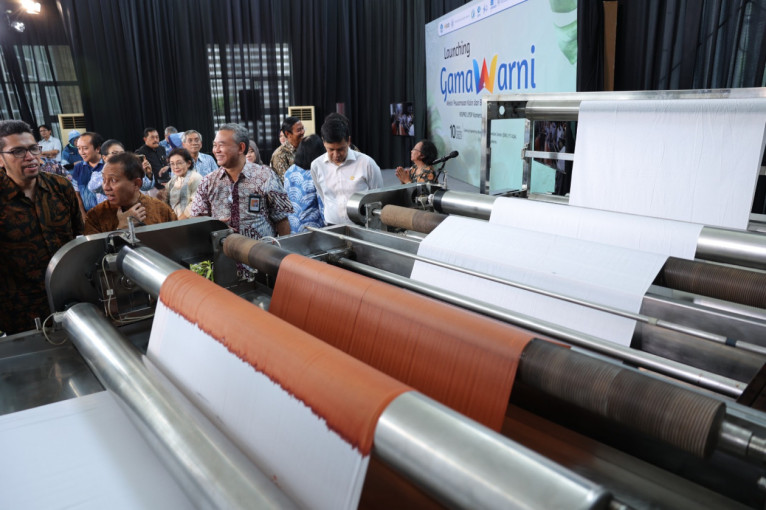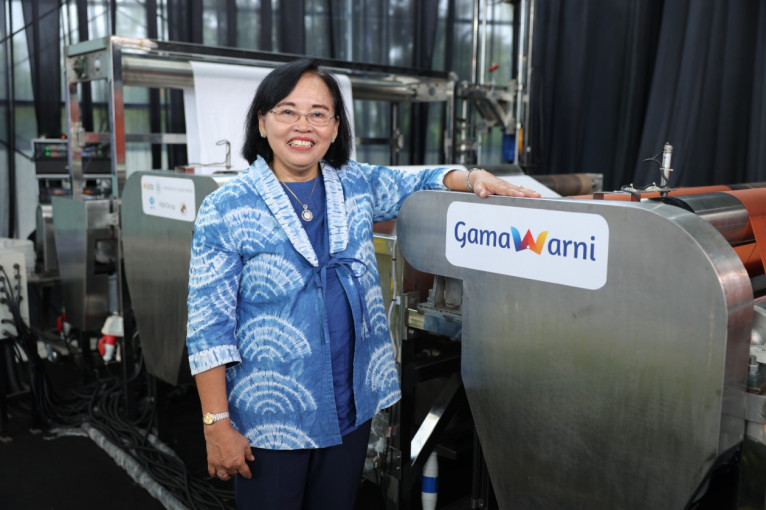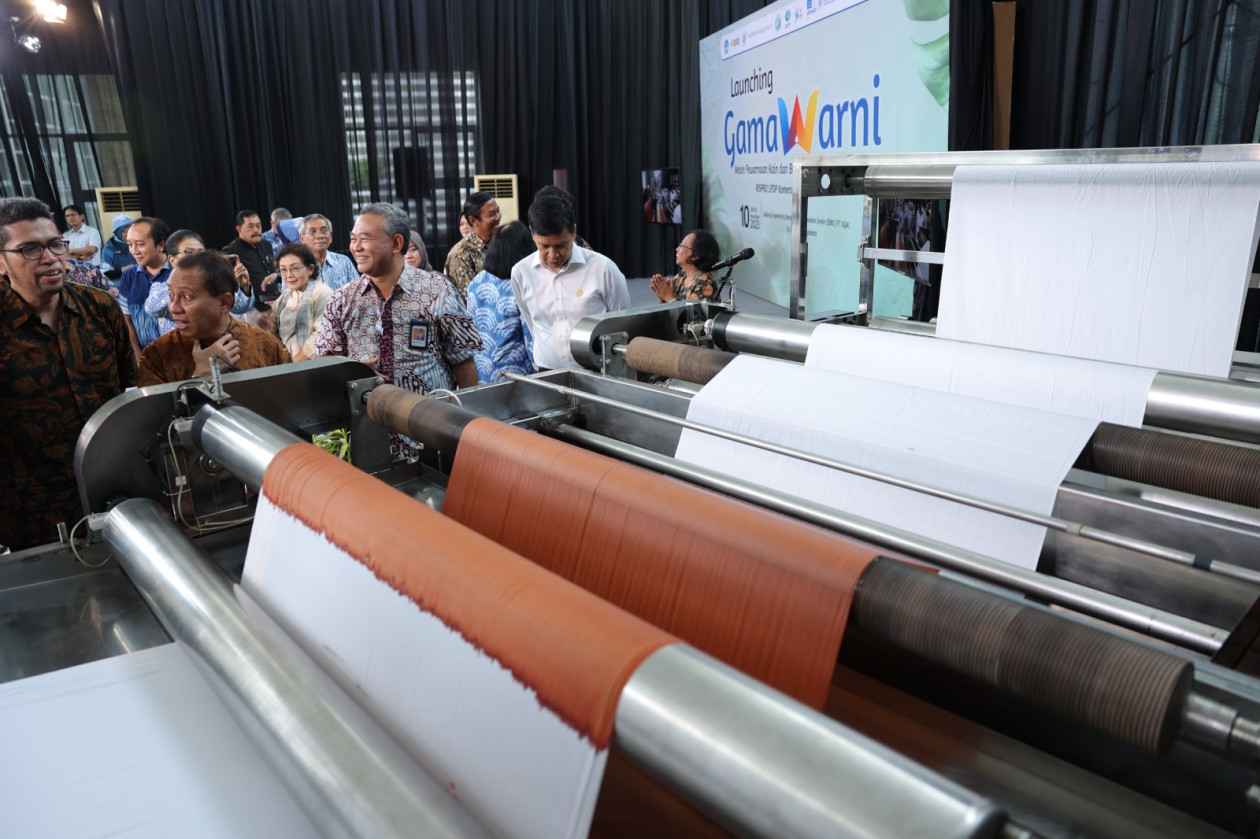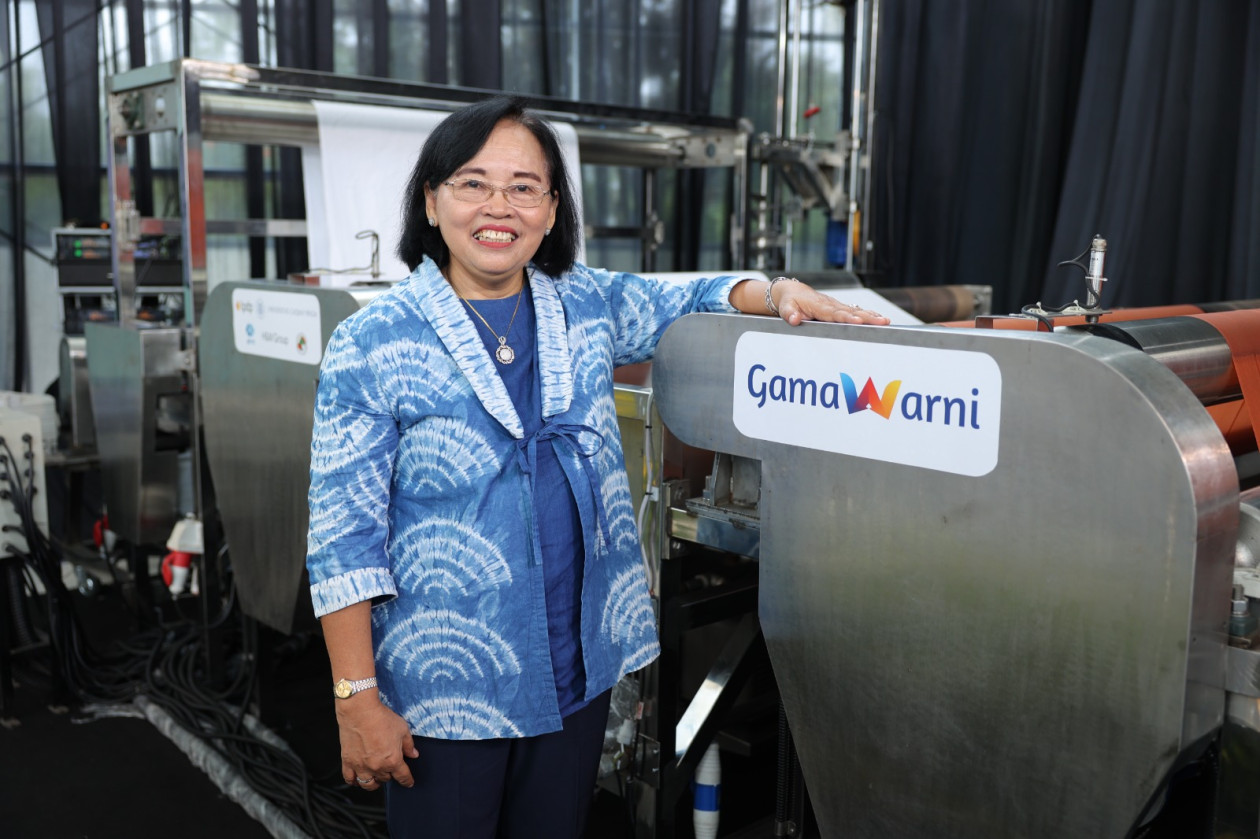A team of UGM researchers has developed a tool for dyeing fabric and yarn using natural dyes called GamaWarni. This tool was created to support Indonesia’s accelerated use of natural dyes.
GamaWarni was developed by a research team led by Professor Edia Rahayuningsih (UGM Faculty of Engineering), with members Dr. Rini Dharmastiti (UGM Faculty of Engineering) and Bayu Prabandono (ATMI Surakarta).
The research and development of GamaWarni were conducted with the support of LPDP funding through Productive Innovative Research (Rispro) from 2020 to 2023.
Professor Rahayuningsih explained that the development of GamaWarni is a translation of research related to the development of natural dyes that has been ongoing since 2007.
The research intensified in 2018 under the UGM Indonesia Natural Dye Institute (INDI), showing support for developing natural dyes in Indonesia.
“The development of GamaWarni is a mechanization of natural dye fabric technology that refers to manual dyeing techniques to be implemented in the industry,” Professor Rahayuningsih said on Friday (November 10) after the launch of GamaWarni at the UGM Faculty of Engineering.
“This way, natural dyes can be accelerated and continued to be used in Indonesia, gradually reducing synthetic dyes.”
As of now, she continued, Indonesia still heavily relies on and imports synthetic dyes for textiles. Data from Statistics Indonesia in 2021 recorded an average import of synthetic dye substances of more than 42,000 tons per year over the last five years.
On the other hand, Indonesia has an ancestral cultural heritage of using safe, natural dyes with compounds beneficial to the body. Indonesia also possesses abundant natural resources and biodiversity, serving as raw materials for making natural dye substances.
More than 150 types of natural dyes have been successfully identified in Indonesia. However, the abundant raw material sources for natural dyes have yet to be optimally utilized, only limited to a few artisans in batik, jumputan, ulos, weaving, and others.
Therefore, efforts to produce and reuse natural dyes must be made to reduce the use of harmful synthetic dyes and decrease the import of synthetic dyes. This effort should be accompanied by the development of supporting technology for natural dyes.
Professor Rahayuningsih explained that GamaWarni was created to support the use of natural dyes on both artisan (manual) and industrial scales with mechanization.
However, natural dyes cannot be applied to existing industrial machines. Natural dyes have unique characteristics, unlike synthetic dyes compatible with industrial machines.
“The machines in the industry today are not compatible with natural dyes. Therefore, we created a fabric and yarn dyeing machine that suits the characteristics of natural dyes,” explained the head of INDI.
In addition to creating a dyeing machine for natural dyes, the team also developed various standardized dyes for machine dyeing. It provided a catalog for multiple color variations. Natural dyes include indigo, soga, tingi, jalawe, tegeran, and merbo.
She added that this machine’s fabric dyeing process can be used for cotton and rayon fabrics. The production capacity of dyeing depends on the type of fabric and color chosen.
“The capacity depends on the type of fabric and color, whether it’s dark or light. If it’s for the rolls, it can be up to hundreds of meters,” Professor Rahayuningsih said.
The presence of GamaWarni is not only an alternative solution to reduce the industry’s dependence on synthetic dyes, primarily imported but also assists fabric dyeing industries, especially at the small and medium scale.
Moreover, it embodies UGM’s commitment to supporting the achievement of Sustainable Development Goals (SDGs).
Author: Ika
Photographer: Firsto





